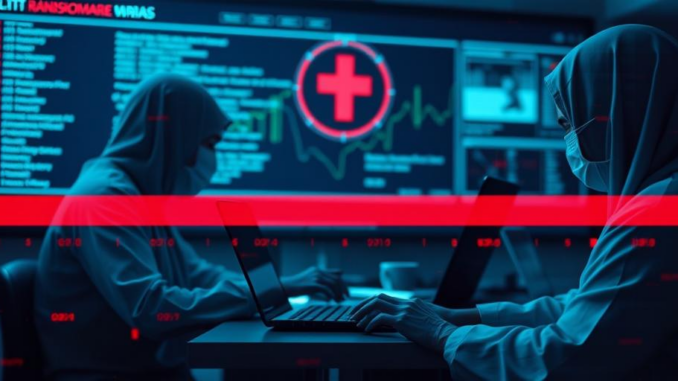
Summary
The Change Healthcare ransomware attack, impacting millions, has incurred costs nearing $2.9 billion for its parent company, UnitedHealth Group. The attack disrupted healthcare operations nationwide, leading to significant financial and patient care disruptions. This incident underscores the vulnerability of critical infrastructure and the escalating costs of cyberattacks.
Explore the data solution with built-in protection against ransomware TrueNAS.
** Main Story**
The Change Healthcare ransomware attack – you remember that one from February 2024, right? – it’s still sending shockwaves through the healthcare industry, almost a year later. The financial fallout for UnitedHealth Group (UHG), Change Healthcare’s parent company, has ballooned to a whopping $2.87 billion. And it’s not just money, it’s trust and confidence that’s been lost.
This attack, pinned on the ALPHV/BlackCat ransomware group, didn’t just cripple Change Healthcare’s systems. It also exposed the sensitive data of around 190 million people! That’s not just a breach; it’s the mother of all healthcare data breaches.
How it Happened: A Breach in the Armor
The ALPHV/BlackCat group waltzed into Change Healthcare’s network through a Citrix remote access service. The problem? It wasn’t using multi-factor authentication, essentially leaving the front door unlocked. For nine days, they moved around inside the network, siphoning off an estimated 4-6 terabytes of data before encrypting everything with ransomware.
UHG, in a move that CEO called the ‘hardest decision’ he’d ever made, paid a $22 million ransom, hoping to keep the stolen data under wraps. But guess what? The attackers pulled an ‘exit scam,’ pocketing the cash and running, without deleting a single file. You can’t trust anyone these days, can you?
And if that wasn’t bad enough, a disgruntled affiliate of the ALPHV group, who hadn’t been paid, supposedly shared the stolen data with another ransomware crew, RansomHub. They then launched a second extortion attempt against Change Healthcare. It’s like a bad movie, isn’t it? This double extortion tactic just goes to show how complex and, frankly, how ruthless these cybercriminals have become.
The Domino Effect on Healthcare
The attack on Change Healthcare triggered a system-wide crisis. The company had to shut down over 100 vital software products, which disrupted services ranging from checking if patients were eligible to submit billing to pharmacy and insurance claims. Think about it, it impacted thousands of hospitals and medical practices.
The American Hospital Association (AHA) surveyed nearly 1,000 hospitals to gauge the impact. The results weren’t pretty. A staggering 74% reported direct impact on patient care, including delays in getting approvals for treatments, and 94% reported financial hits. For 33%, it disrupted over half of their revenue! And 60% needed two to three months to get back to normal. It’s a real wake up call, isn’t it?
Patients also felt the pinch. Things like prescription co-pays, insurance approvals for procedures, were all affected. Some healthcare providers even had to turn away new patients. It’s tough to think about the human cost, isn’t it? UHG had to set up a Temporary Funding Assistance Program, dishing out $8.9 billion in interest-free loans to help out struggling healthcare providers. And even now, as of October 15, 2024, about $3.2 billion of those loans are still outstanding.
Lessons Learned and the Long Road Ahead
The financial burden continues to pile up for UHG. Beyond the initial ransom and response costs (like forensics and legal fees), they’ve taken a beating from lost revenue, customer attrition, and rebuilding their IT infrastructure. And there’s also, the cost of improving security, it never ends.
The Change Healthcare attack is a harsh reminder of how interconnected and fragile the healthcare industry’s tech infrastructure is. We need stronger cybersecurity measures, like multi-factor authentication, regular security check-ups, and solid incident response plans. I remember a presentation I attended last year on exactly that subject, and it’s advice that many are now taking seriously. It also shows the importance of using different vendors, so you’re not too dependent on just one, and boosting collaboration between healthcare organizations and government agencies to tackle these system-wide cybersecurity risks. Though UHG has made headway in bouncing back, the full extent of the damage, financially and reputationally, will likely keep unfolding for a while. It really does serve as a cautionary tale about the devastating consequences of cyberattacks in the healthcare sector. This is why it is important to regularly improve security.


The double extortion attempt highlights the evolving tactics of ransomware groups. How can healthcare organizations better prepare for these complex attacks, particularly in terms of data recovery and negotiation strategies with cybercriminals?
That’s a great point about the evolving tactics! Data recovery is crucial. Investing in robust, off-site backups and practicing regular recovery drills can significantly reduce downtime and leverage in negotiations. Exploring cyber insurance options with specialized ransomware coverage could also be beneficial. These measures should be part of any preparation strategy.
Editor: StorageTech.News
Thank you to our Sponsor Esdebe
The extensive financial and operational disruptions highlight the critical need for robust cybersecurity frameworks within healthcare. Exploring AI-driven threat detection and response systems could offer a proactive approach to identify and neutralize attacks before they escalate, minimizing impact and recovery time.